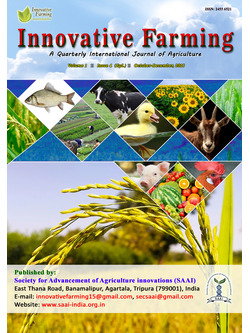
Photoperiodic Control of Flowering Time in Plants
Pallavi, N.*
ZAHRS, Babbur Farm, Hiriyur
T.N. Dhanalakshmi
ZAHRS, Babbur Farm, Hiriyur
T. Rudramuni
ZAHRS, Babbur Farm, Hiriyur
G. Hanumanth Naik
ZAHRS, Babbur Farm, Hiriyur
DOI: NIL
Keywords: Photoperiodism, Critical length, Phytochrome, Circadian Clock
Abstract
The rotation of the earth results in periodic changes in environmental factors such as day length and temperature. Developmental responses occur in plants to the relative lengths of light and dark periods. The circadian clock is the endogenous mechanism responsible for day-length measurement, and allows plants to anticipate these fluctuations and modulate their developmental programs to maximize adaptation to those environmental cues. Flowering is also a response to the changing in length of day and night as the season progresses. Because flowers produce seeds and flowering is crucially important for the plant to complete its life cycle.
Downloads
not found
